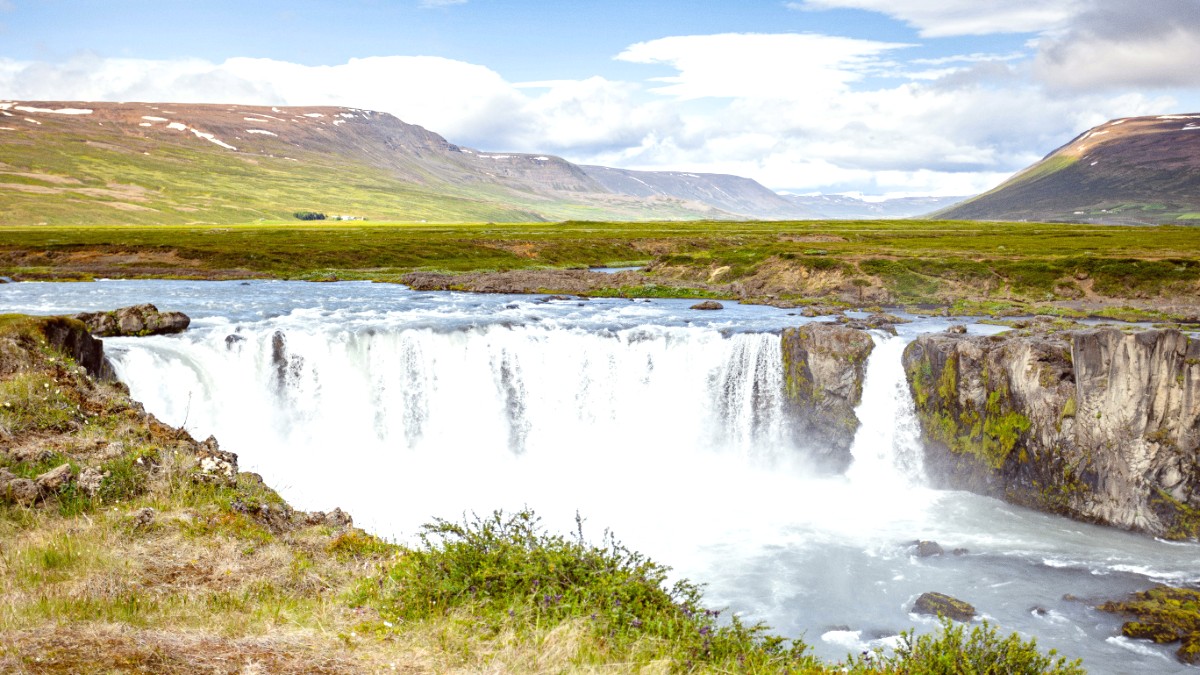
The North, Iceland
Icelandic cuisine historically relied on abundant fish, lamb, and dairy. Early preservation methods like salting, smoking, and fermenting supported communities through long winters.
Akureyri's culinary scene blends these traditional ingredients with contemporary techniques and international influences. The emphasis is on fresh, local ingredients from surrounding farms and Eyjafjörður's fishing grounds.
Free-roaming Icelandic lamb is a staple. Fresh fish (cod, haddock, salmon, arctic char) and seafood (shrimp, langoustine) from cold Atlantic waters deliver exceptionally high quality.
Skyr, a thick, protein-rich dairy product similar to Greek yogurt, is a national favorite. Root vegetables like potatoes, carrots, and rhubarb thrive in Iceland's climate.
North Iceland maintains strong agricultural traditions. Freshwater fish from Lake Mývatn are prominent. Local breweries like Einstök Beer use Icelandic water for unique flavors. Flavors are often simple, highlighting ingredient quality.
A hearty traditional lamb and vegetable soup. Find this warming dish at local cafes and traditional Icelandic restaurants.
A perfect comfort food on a cold day.
Freshly caught fish, often cod or haddock, battered and fried. Found at dedicated fish and chips shops or many casual restaurants.
The freshness of the fish elevates this simple dish.
The iconic Icelandic hot dog is a required try. Typically served with fried onion, raw onion, ketchup, sweet brown mustard, and remoulade.
Widely available from kiosks and gas stations.
Brennivín ("Black Death"), traditional schnapps. Iceland has a growing craft beer scene; Einstök Beer (near Akureyri) produces excellent beers.
Skyr is versatile and healthy. Kleinur (twisted doughnuts), Snúður (cinnamon buns), and Lakkrís (licorice, often with chocolate) are popular.
Elevated culinary experiences emphasizing fresh local ingredients and modern techniques.
Comfortable settings with varied menus, blending local and international fare.
Affordable and quick options for budget-conscious travelers.
Vegetarian and vegan choices are increasingly common. Most mid-range and fine dining establishments offer at least one vegetarian option.
Look for "grænmetisréttir" (vegetarian dishes) or "vegan" marked on menus.
Many restaurants recognize common allergens and can cater to gluten-free, dairy-free, or nut allergies.
Clearly communicate your dietary requirements when ordering. Gluten-free bread and pasta are becoming common.
Visit Einstök Ölgerð Brewery for tours and tastings of local craft beers.
At Kaffi Kú (Cow Café), observe cows and savor dairy products made on-site.
The annual Fish Festival (Fiskidagurinn Mikli) in Dalvík (August) celebrates seafood.
The Bjórböðin (Beer Spa) in Árskógssandur also features a restaurant with beer-infused dishes.
A mid-winter festival featuring traditional "Þorramatur" (Thorri food), including fermented shark (hákarl) and sheep's head (svið).
This presents an acquired taste and unique cultural experience.
Malt og Appelsín, a popular non-alcoholic mix of malt drink and orange soda, is especially popular around Christmas.
Ice cream remains very popular year-round, even in the cold climate.
Supermarkets like Bónus, Krónan, and Nettó are the main source for groceries. They offer pre-made sandwiches, salads, and hot meals.
Several restaurants leverage Akureyri's scenic location to enhance the dining experience, offering stunning fjord views.
Located near Akureyri in Árskógssandur. Offers brewery tours and tastings, showing locally produced craft beers.
Located on a dairy farm outside Akureyri. Visitors observe cows through a glass wall while enjoying dairy products and meals.
Several farms in the area produce local goods like cheese, skyr, jams, and vegetables, often available for direct purchase.
Formal cooking classes are limited in Akureyri. Some farm stays in the region might offer informal culinary experiences or demonstrations.
Inquire directly with farm stays for availability.
No dedicated food tours specific to Akureyri exist. Some general North Iceland tours might include food tastings or stops at local farms or breweries.
Check general tour itineraries for food-related stops.
Having basic Icelandic phrases for dietary needs can make ordering smoother. Staff often speak English, but a local phrase shows appreciation.
Some ingredients and dishes are more prevalent during certain seasons, reflecting local harvest and fishing cycles. Enjoy the freshest offerings.
Lunch menus and supermarket delis often offer better value than dinner for budget-conscious travelers. Look for daily specials.
Do not hesitate to ask restaurant staff for recommendations or about the origin of local ingredients.